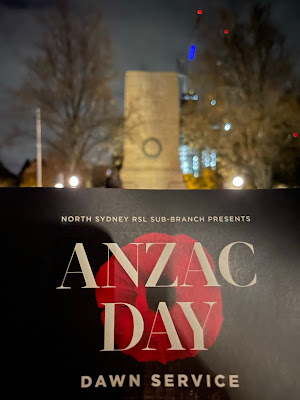Today is the 25 April 2023 which marks a day of remembrance for those who fought and died for Australia’s during the wars. I woke up prior to dawn to attend the local ANZAC dawn service with hundreds of others in the community. It was great to be part of this service and remember history.
My passion for history including modern history of the Two World Wars dates back to when I was a teenager when I had a great history teacher. As a result, I incorporated this interest with the interest in modelling and during my teens I modelled many a Airfix and Matchbox 1/72 scale model tanks and armoured vehicles.
Bringing the military modelling into the layout
Fast forward to today, since building my layout, I sought to incorporate military modelling in my layout. I included my first military modelling back in April 2020, https://innerwesthoscale.blogspot.com/2020/04/from-hiatus-to-isolation-work.html. and still wanted to do more.
Apart from the SDS NSW TE Flat wagons with Centurion Tank loads, there is very little of military rolling stock commercially available. This means I needed to research and find what were the prototype miliary loads that would show some variety and were used by the Australian armed forces that I could use as a load.
I already had a Wiking Land Rover and more recently acquired a Roco Saladin Mark 1 armoured vehicle both which were part of the Australian army vehicles. I also really liked Half-tracks and had a Matchbox Battle Kings M3 A1 but after some research I didn’t find that these were used by the Australian army during WWII.
White Scout M3 Car
 |
| Above: Completed, painted and tarped White Scout M3 Car on a NSW KF flat wagon on military train. |
After some research on the internet and searching Australian military vehicle museum collections, I found various armoured vehicles in which to model (Army Museum Bandiana, Wodonga)
https://armymuseumbandiana.com.au/. With the advancement of 3D printing, I found on Ebay various armoured vehicles that could be modelled, in lieu of a Half-track, I found a suitable alternative, a White Scout M3 Car. One built up version readily available is the Artitec M3A1 White Scout Car. However, the cost is quite prohibitive over $60 AUD and it is already decaled up in US army livery.
Painting and Detailing
Rather than painting it in army green I decided to paint it in desert camouflage, including a tarp. The painting of desert camouflage was achieved by painting the whole vehicle in a dark green colour and then upon drying covering the whole model in masking tape and then cutting the camouflage shapes in which to paint the light desert tan colour.
The tarp roof was made using foam and then topped with tissue paper with diluted white glue to give it a tight look. It was then painted a earth brown colour.
 |
| Above: 3D print of the model prior to priming and painting. |
I found a photo on the internet that used as a reference for the load.
 |
| Above: White Scout truck on a KF flat wagon.* |
Reference
* https://www.records.nsw.gov.au/image/17420_a014_a014001313




.jpg)























